Haofei Lu
The First WARA Robotics Mobile Manipulation Challenge -- Lessons Learned
May 11, 2025Abstract:The first WARA Robotics Mobile Manipulation Challenge, held in December 2024 at ABB Corporate Research in V\"aster{\aa}s, Sweden, addressed the automation of task-intensive and repetitive manual labor in laboratory environments - specifically the transport and cleaning of glassware. Designed in collaboration with AstraZeneca, the challenge invited academic teams to develop autonomous robotic systems capable of navigating human-populated lab spaces and performing complex manipulation tasks, such as loading items into industrial dishwashers. This paper presents an overview of the challenge setup, its industrial motivation, and the four distinct approaches proposed by the participating teams. We summarize lessons learned from this edition and propose improvements in design to enable a more effective second iteration to take place in 2025. The initiative bridges an important gap in effective academia-industry collaboration within the domain of autonomous mobile manipulation systems by promoting the development and deployment of applied robotic solutions in real-world laboratory contexts.
Grasping a Handful: Sequential Multi-Object Dexterous Grasp Generation
Mar 31, 2025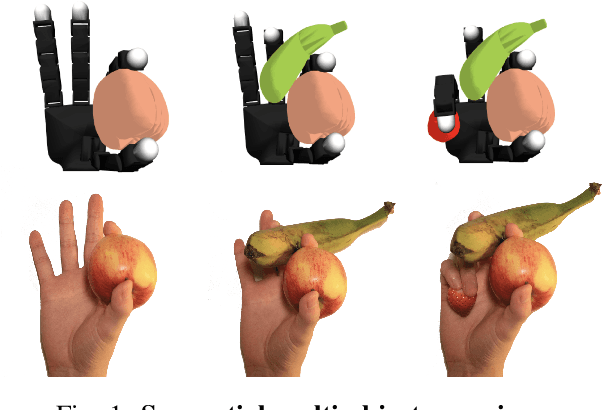
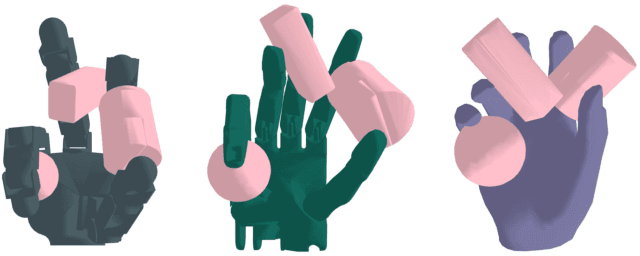
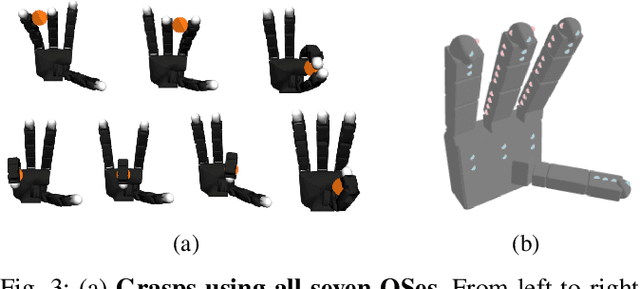
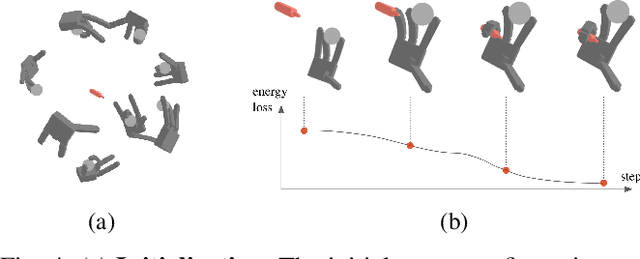
Abstract:We introduce the sequential multi-object robotic grasp sampling algorithm SeqGrasp that can robustly synthesize stable grasps on diverse objects using the robotic hand's partial Degrees of Freedom (DoF). We use SeqGrasp to construct the large-scale Allegro Hand sequential grasping dataset SeqDataset and use it for training the diffusion-based sequential grasp generator SeqDiffuser. We experimentally evaluate SeqGrasp and SeqDiffuser against the state-of-the-art non-sequential multi-object grasp generation method MultiGrasp in simulation and on a real robot. The experimental results demonstrate that SeqGrasp and SeqDiffuser reach an 8.71%-43.33% higher grasp success rate than MultiGrasp. Furthermore, SeqDiffuser is approximately 1000 times faster at generating grasps than SeqGrasp and MultiGrasp.
Habitizing Diffusion Planning for Efficient and Effective Decision Making
Feb 10, 2025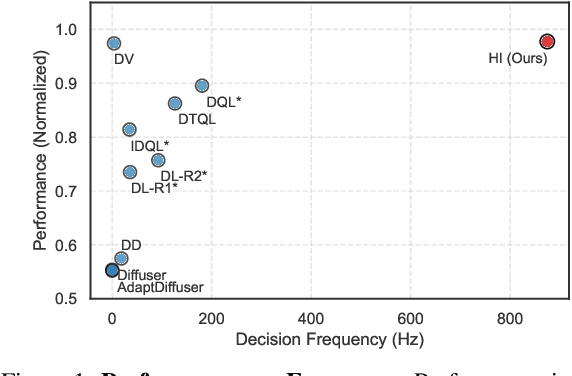
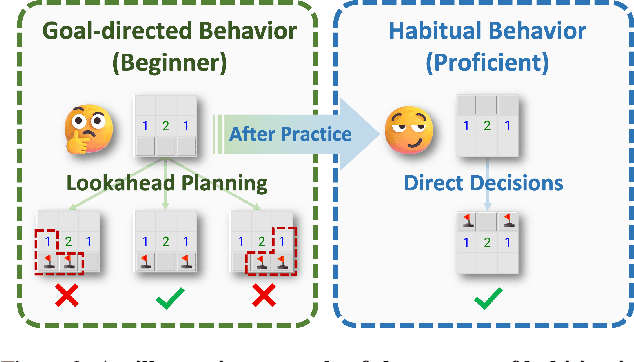
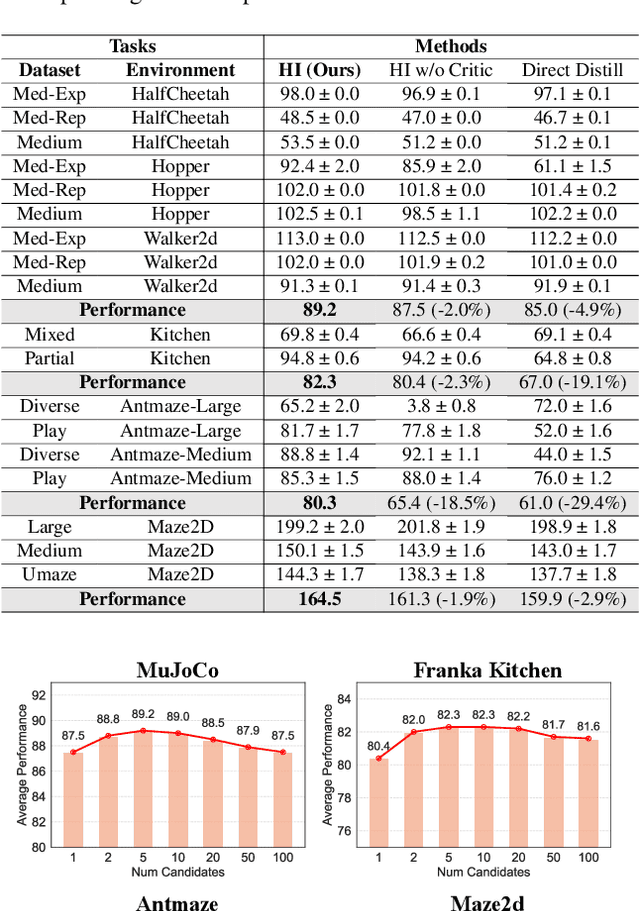
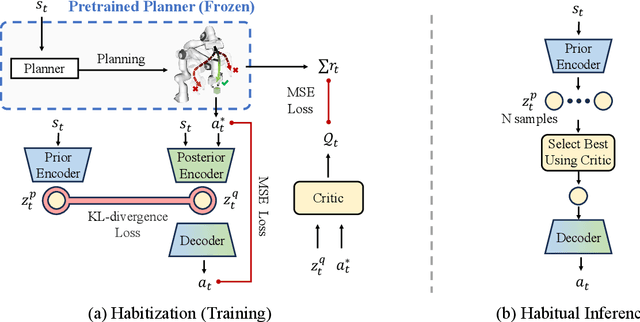
Abstract:Diffusion models have shown great promise in decision-making, also known as diffusion planning. However, the slow inference speeds limit their potential for broader real-world applications. Here, we introduce Habi, a general framework that transforms powerful but slow diffusion planning models into fast decision-making models, which mimics the cognitive process in the brain that costly goal-directed behavior gradually transitions to efficient habitual behavior with repetitive practice. Even using a laptop CPU, the habitized model can achieve an average 800+ Hz decision-making frequency (faster than previous diffusion planners by orders of magnitude) on standard offline reinforcement learning benchmarks D4RL, while maintaining comparable or even higher performance compared to its corresponding diffusion planner. Our work proposes a fresh perspective of leveraging powerful diffusion models for real-world decision-making tasks. We also provide robust evaluations and analysis, offering insights from both biological and engineering perspectives for efficient and effective decision-making.
DexDiffuser: Generating Dexterous Grasps with Diffusion Models
Feb 05, 2024



Abstract:We introduce DexDiffuser, a novel dexterous grasping method that generates, evaluates, and refines grasps on partial object point clouds. DexDiffuser includes the conditional diffusion-based grasp sampler DexSampler and the dexterous grasp evaluator DexEvaluator. DexSampler generates high-quality grasps conditioned on object point clouds by iterative denoising of randomly sampled grasps. We also introduce two grasp refinement strategies: Evaluator-Guided Diffusion (EGD) and Evaluator-based Sampling Refinement (ESR). Our simulation and real-world experiments on the Allegro Hand consistently demonstrate that DexDiffuser outperforms the state-of-the-art multi-finger grasp generation method FFHNet with an, on average, 21.71--22.20\% higher grasp success rate.
CAPGrasp: An $\mathbb{R}^3\times \text{SO-equivariant}$ Continuous Approach-Constrained Generative Grasp Sampler
Oct 18, 2023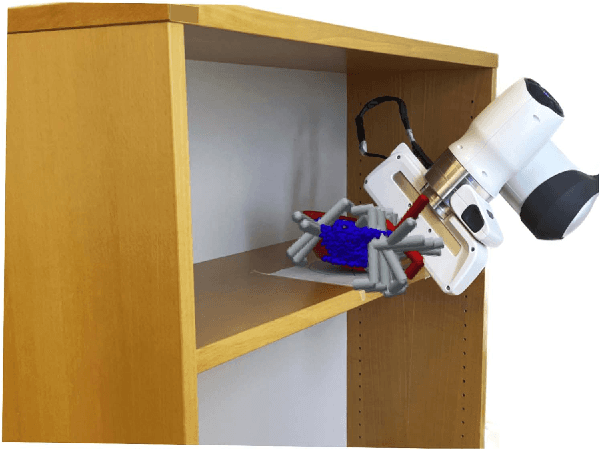
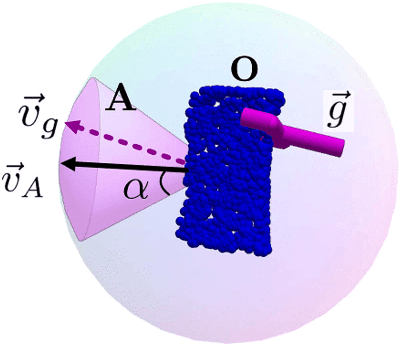
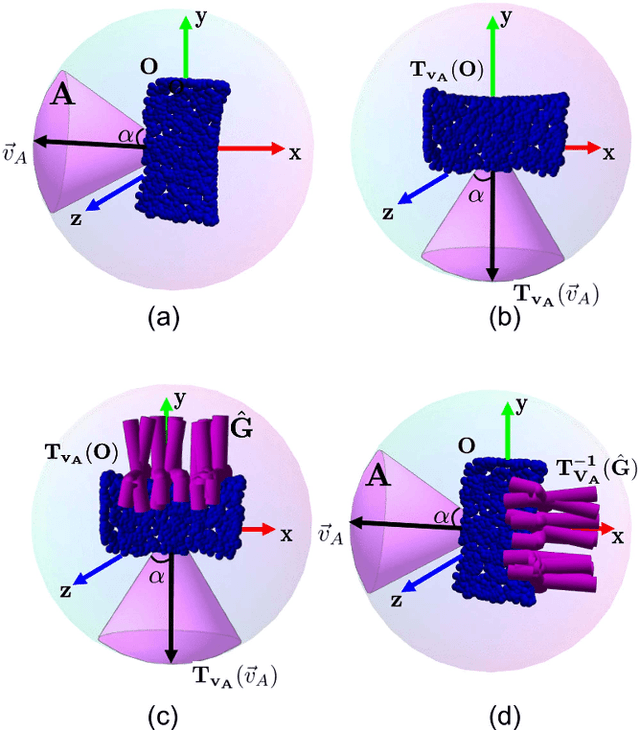
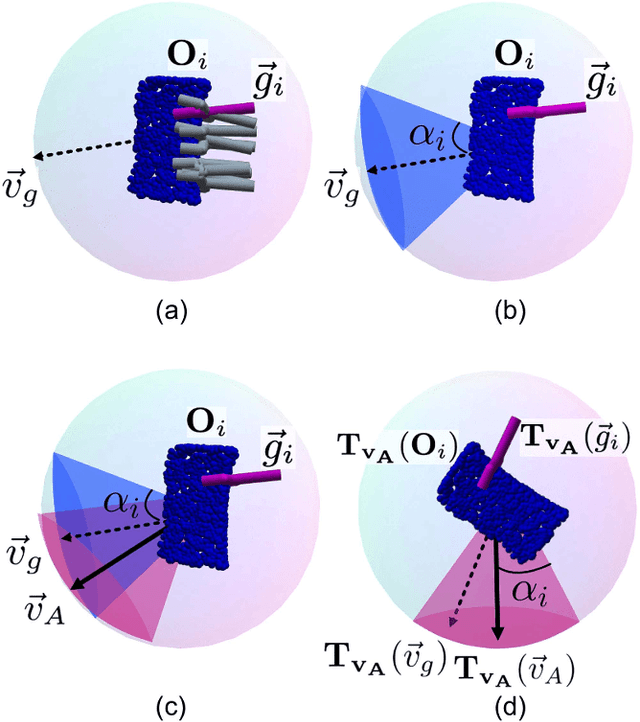
Abstract:We propose CAPGrasp, an $\mathbb{R}^3\times \text{SO(2)-equivariant}$ 6-DoF continuous approach-constrained generative grasp sampler. It includes a novel learning strategy for training CAPGrasp that eliminates the need to curate massive conditionally labeled datasets and a constrained grasp refinement technique that improves grasp poses while respecting the grasp approach directional constraints. The experimental results demonstrate that CAPGrasp is more than three times as sample efficient as unconstrained grasp samplers while achieving up to 38% grasp success rate improvement. CAPGrasp also achieves 4-10% higher grasp success rates than constrained but noncontinuous grasp samplers. Overall, CAPGrasp is a sample-efficient solution when grasps must originate from specific directions, such as grasping in confined spaces.
Enabling Robot Manipulation of Soft and Rigid Objects with Vision-based Tactile Sensors
Jun 09, 2023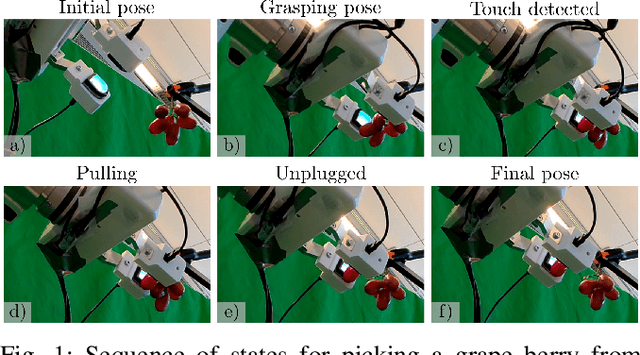
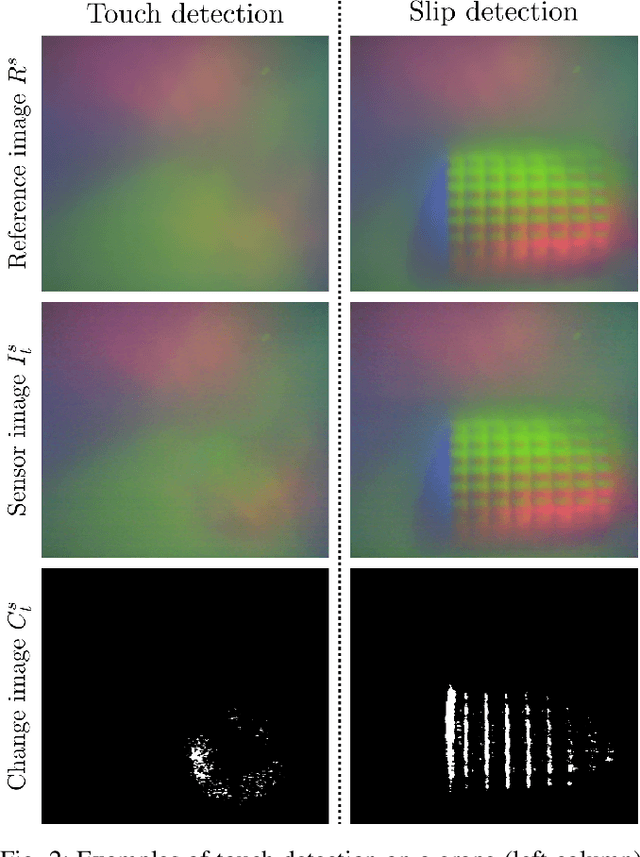
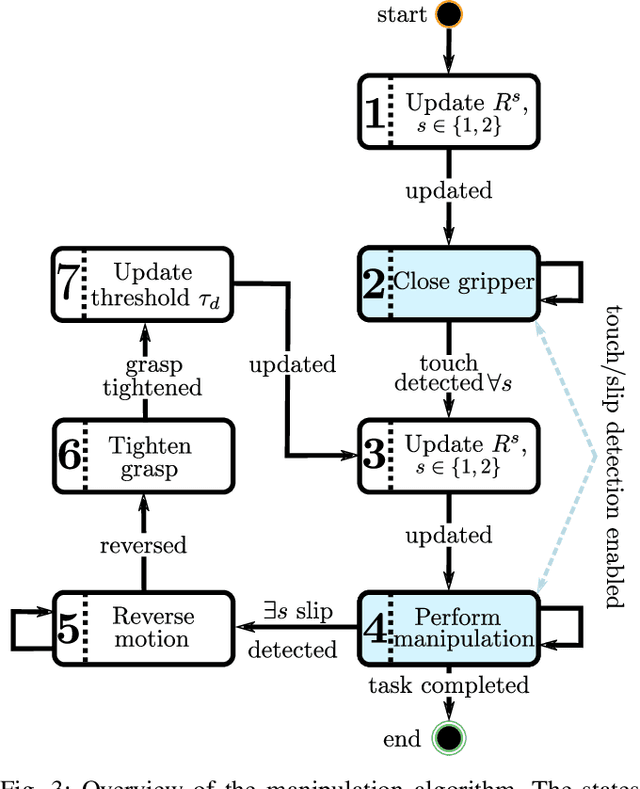

Abstract:Endowing robots with tactile capabilities opens up new possibilities for their interaction with the environment, including the ability to handle fragile and/or soft objects. In this work, we equip the robot gripper with low-cost vision-based tactile sensors and propose a manipulation algorithm that adapts to both rigid and soft objects without requiring any knowledge of their properties. The algorithm relies on a touch and slip detection method, which considers the variation in the tactile images with respect to reference ones. We validate the approach on seven different objects, with different properties in terms of rigidity and fragility, to perform unplugging and lifting tasks. Furthermore, to enhance applicability, we combine the manipulation algorithm with a grasp sampler for the task of finding and picking a grape from a bunch without damaging~it.
GoNet: An Approach-Constrained Generative Grasp Sampling Network
Mar 14, 2023Abstract:Constraining the approach direction of grasps is important when picking objects in confined spaces, such as when emptying a shelf. Yet, such capabilities are not available in state-of-the-art data-driven grasp sampling methods that sample grasps all around the object. In this work, we address the specific problem of training approach-constrained data-driven grasp samplers and how to generate good grasping directions automatically. Our solution is GoNet: a generative grasp sampler that can constrain the grasp approach direction to lie close to a specified direction. This is achieved by discretizing SO(3) into bins and training GoNet to generate grasps from those bins. At run-time, the bin aligning with the second largest principal component of the observed point cloud is selected. GoNet is benchmarked against GraspNet, a state-of-the-art unconstrained grasp sampler, in an unconfined grasping experiment in simulation and on an unconfined and confined grasping experiment in the real world. The results demonstrate that GoNet achieves higher success-over-coverage in simulation and a 12%-18% higher success rate in real-world table-picking and shelf-picking tasks than the baseline.
Dynamic Multi-View Scene Reconstruction Using Neural Implicit Surface
Feb 28, 2023Abstract:Reconstructing general dynamic scenes is important for many computer vision and graphics applications. Recent works represent the dynamic scene with neural radiance fields for photorealistic view synthesis, while their surface geometry is under-constrained and noisy. Other works introduce surface constraints to the implicit neural representation to disentangle the ambiguity of geometry and appearance field for static scene reconstruction. To bridge the gap between rendering dynamic scenes and recovering static surface geometry, we propose a template-free method to reconstruct surface geometry and appearance using neural implicit representations from multi-view videos. We leverage topology-aware deformation and the signed distance field to learn complex dynamic surfaces via differentiable volume rendering without scene-specific prior knowledge like template models. Furthermore, we propose a novel mask-based ray selection strategy to significantly boost the optimization on challenging time-varying regions. Experiments on different multi-view video datasets demonstrate that our method achieves high-fidelity surface reconstruction as well as photorealistic novel view synthesis.
 Add to Chrome
Add to Chrome Add to Firefox
Add to Firefox Add to Edge
Add to Edge